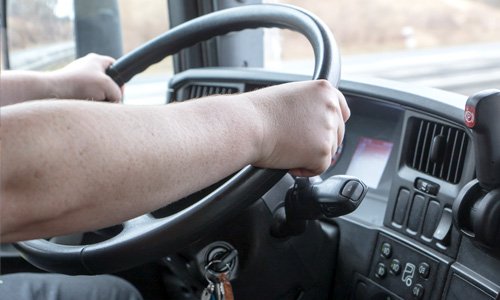 Wtransnet, the networking platform within the transport sector, is committed to the use of connected objects for improving sector efficiency.
Wtransnet, the networking platform within the transport sector, is committed to the use of connected objects for improving sector efficiency.
Based on the study published by Science magazine based on 1,000 lorries studied for 24 hours, these only spent 10% of the time on transporting, while out of service for 25% of the time, with 14% spent on loading and unloading and 16% travelled empty.
Along this line, recent forecasts indicate that connected devices could increase in up to 30% by 2020, leading to the transport sector using 237.2 million connected objects, which would make driving times and lorry handling much easier. So, it is no wonder that the future of the sector includes the implementation of these solutions for improving the day-to-day of these professionals. In this sense, Wtransnet became a leader in apply technology to the transport sector with its freight exchange and its innovative matching system, aimed at balancing the transport flows and reduce empty trips.
“At Wtransnet we have always believe in the potential of technology for improving the lives of the companies and self-employed workers dedicated to road transport”, states Jaume Esteve, CEO of Wtransnet. “Back in 1997 we didn’t doubt about working with the Internet when we created the first freight and lorry exchange, and we are now convinced that we are now before a second revolution which is very much demanded by the sector”.
Connected vehicles can offer great advantages for improving these efficiency problems, and we are not referring to a future trend, but a reality. For example, the limitation in working hours provided by law, is one of the main hurdles faced by road carriers. For this, we have developed applications controlling their hours and planning their routes, providing them with information on their driving times and the necessary rest times, which enables them to optimise their routes.
Also, by simply glancing at his mobile phone, a carrier can find loads for an empty lorry thanks to the Wtransnet Cargo app, which includes geolocation and an immediate payment guarantee service; or he can find the locations where to park close to the driver’s position with all the necessary practical information such as whether the area has showers, bathrooms, restaurants, WiFi, whether this is free, or whether there is surveillance, one of the main demands made by carriers.
We aren’t just talking about apps, but also about connected devices aimed at helping the carrier in his day-to-day work, such as an intelligent wrist watch which informs the driver on his average speed, fuel consumption, rest times, heart rate and informs him of phone calls, SMS and e-mails received.
This trend will not be limited to vehicles, but motorways and highways will also be a part of this change. We are currently developing several projects which allow to view what roads will be like in future; tarmac which thanks to solar energy will generate the necessary supply for self-sufficiency; roads which light up automatically at night or which facilitate thawing ice in winter thanks to the solar energy accumulated during the day; self-draining tarmac for rainy areas and self-repairing tarmac, which would entail significant savings in maintenance and repair costs and would reduce the environmental damage caused by maintenance tasks; or even roads capable of transmitting energy to electric vehicles, preventing vehicles from being stranded.
Connecting transport means to an intelligent infrastructure opens up a world of possibilities for turning all these figures into significant information which enables to increase the efficiency and safety of the sector, with applications which provide information at all times and help to check the vehicle and in the event of an accident; improving communication during long working hours; favouring the environment and reduce costs, in turn facilitating the work of the carriers.
 English
English Español
Español Deutsch
Deutsch Français
Français Italiano
Italiano Português
Português Polski
Polski Wtransnet Blog Wtransnet Blog: Transport and Logistics News in Europe.
Wtransnet Blog Wtransnet Blog: Transport and Logistics News in Europe.
